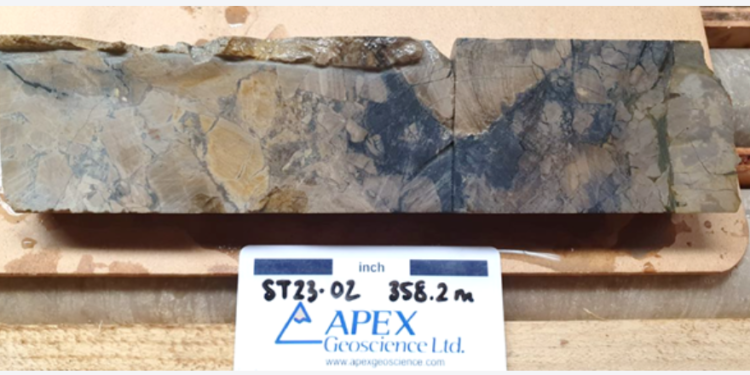Aston Bay Holdings Ltd. (TSXV: BAY | OTCQB: ATBHF) and American West Metals (ASX: AW1) have reported significant copper sulphide mineralization intercepts from its initial two diamond drill holes testing a blind gravity target at the Storm Copper Project on Somerset Island, Nunavut, Canada.
“Discovery of sedimentary hosted copper has been the true goal for all explorers at Storm, including Aston Bay. I’m delighted to report that, finally, the quest has succeeded, and we have definitive proof of a new sediment hosted copper system.” stated Thomas Ullrich, CEO of Aston Bay.
Diamond drilling of a large gravity target has yielded exciting results for Storm Copper Exploration. Thick intervals of copper sulphides were intersected during the drilling, which raises hopes for potential new copper deposits.
The two discovery drill holes showed similarities to many major sediment-hosted copper systems around the world, such as those in the Kalahari Copper Belt and Central African Copper Belt.
In total, 45.5m of visual sulphides were identified in drill hole ST23-01. This included 30.5m of breccia-style visual copper sulphide dominantly made up of chalcocite. The sulphide was identified within three zones in the shallow copper mineralization of the 4100N Zone, between 45m and 86m downhole. Deeper in the hole, the discovery of 15m of visual breccia and vein-style copper sulphide consisting predominantly of chalcopyrite was documented at 332m to 347m downhole. This was the first intersection discovered through this method.
Diamond drill hole ST23-02 revealed an even more impressive discovery zone featuring 37m of visual breccia-style copper sulphide. The sulphide was dominantly made up of chalcocite and had minor native copper. The zone was located between 333m and 370m downhole and this showcased how effective diamond drilling was in identifying potential new deposits.
The two diamond drill holes were spaced 680m apart. The continuity of the mineralized horizon and the size of the gravity anomaly, which was measured to be over 5km long and up to 1km wide, suggested that drilling has possibly identified a large copper deposit.
It is noteworthy that mineralization was intersected in both holes at the top of a modelled gravity anomaly. This has highlighted the potential effectiveness of the technique for exploration targeting. There remain untested areas at Storm with gravity targets similar to those intersected by these initial diamond drill holes. This supports the potential for a major, regional-scale copper system.
Diamond drilling continues on high-priority copper targets with first assays expected in the next four weeks. Reverse circulation resource definition drilling is also underway on near-surface copper targets. Results from the 2750N and 2200N Zones are expected shortly.
To find out more, please visit www.astonbayholdings.com
To read more news, please visit www.theassay.com/news












